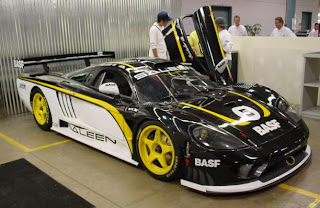Nissan GTR
I have begun to wonder if the Nissan GT-R may attempt to be the first car to lap the Ring in Nurburg in under 7 minutes, becoming the first legitimate production car to do so.
It seems the race hasn't stopped yet since Nissan's epic debut at the Tokyo Auto show with the 7:29 video as the prelude to the unveiling of the 2009 Nissan GT-R . In my opinion, it was modestly tuned, and there wasn't a serious emphasis on weight reduction, as Kazutoshi Mizuno added in response to the weight reduction inquiries, "Nissan GT-R is a multi-performance supercar" and that the 'Nissan GT-R is a super car for anyone, anytime, anywhere', with even snow in mind, which even influenced their decision in the tires.
Nissan GTR
I was quite impressed with the initial 7:19 time around Nurburgring of the Dodge ACR, followed by the 7:19 by the Nurburgring edition ZR1, followed shortly after with the 7:14 of the Nurburgring Edition LFA, and now the 7:12 from the ACR.
Nissan GTR
I was thinking about this, and how it would be interesting to see how a modified Nissan GT-R fares, similarly to how the ACR is a modified track prepped Dodge Viper with full weight reduction. Chevrolet produced the Carbon Edition C6 Z06, and then in turn the Nurburgring ZR1. Lexus then followed suit with the Nurburgring edition LFA. I am curious, were Nissan GT-R to go balls out on a Spec V version.
Nissan GTR
Then I thought about how the R33 Nissan GT-R was the first production car to lap the ring in under 8 minutes.
Nissan GT-R could have easily gone balls to the wall, but rather they are incrementally increasing the Nissan GT-R's performance, starting with model years 2012, then potentially 2013, in incremental amounts of added horsepower, weight reduction, suspension tweaks and other performance additions. This in itself almost seems a brilliant marketing ploy to the likes of Apple with the iPhone.
It almost seems they are waiting for everyone give it their best shot, and then perhaps come back out and try for another good time.
With cars now dipping into the low 7 minute mark, it would be exciting to see Nissan GT-R once again break the next minute barrier.
Considering how the R32 GTR was soon given the nickname Godzilla after obliterating everyone in Japan after it's release for 29 races straight of domination. Then onto Australia for more domination, until they eventually banned it from racing. Then when it was actually allowed to race, the rules gave it a huge handicap of added weight until the competitors could catch up.
Then the mark left by the R33 GTR in Nurburg.
I don't know of a huge mark left by the R34 GTR aside being a beautiful car that I wish I owned, and Mine's R34 speaks for itself.
I would love to see Nissan GT-R leave a mark of this proportion with the R35 GT-R, it would be historical.
It is already breaking the laws of physics when taking the power versus weight ratio into consideration, and Nissan GT-R seems to be a tad modest, as they even produced the GT-R with driving in the snow in mind.
Article Source: http://EzineArticles.com/?expert=Martin_Lotsberg
Article Source: http://EzineArticles.com/6569139
COURTESY BY:
http://ezinearticles.com/?Will-The-Nissan-GTR-Break-7-Minutes-At-The-Ring-As-The-First-Production-Car?&id=6569139




































































